Are we stuck? Or are we just at an interim stage in the evolutionary cycle, waiting for the next step to shift the landscape again? In this presentation I introduce some thoughts in regards to how we need to change our thinking if we are to break out of the repetitive cycle we seem to be in.
I’ve just uploaded my last presentation “Connect everything else” on slideshare.net
. There are three reasons inspiring me to write this:
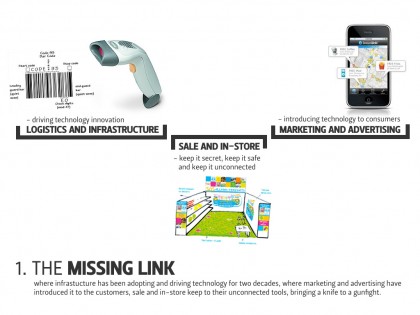
1. The missing link
If we divide the value chain of a product into three parts; logistics and infrastructure, sales and in-store and marketing and advertising
. We see that the first part is very innovative and quick at adapting new technology
. The last part is testing out some of these technologies carefully in the consumer interface. But the middle part, where decisions are made and sales are closed, in this part of the chain the technology seems to be missing – and this is where we need it the most..
.
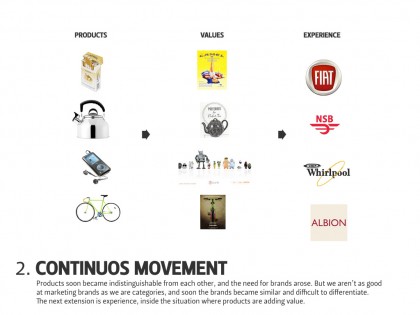
2. Continuous Movement
In the history of products and brands we started with products. These soon became unidentifiable in competition with its rivals and we started adding a value/story to them to give them a uniqueness that people could connect with and build preference to. Unfortunately we are, as Richard Murray told us; good at creating categories, but bad at creating individual brands. This has led to a situation where the brands themselves are difficult to differentiate because they are built on the same premises inside the same categories. And the generic result of this pushes us to the next generation of brand preference building: experience / services. What we are trying to do now is offer an integrated experience part to the product that differentiates it by offering additional unique value.
The Nokia / Burton Push project is an example of this. Where buying a Burton snowboard will give you access to a set of electronic services and experiences that will completely change the role of snowboarding for the people engaging in it.
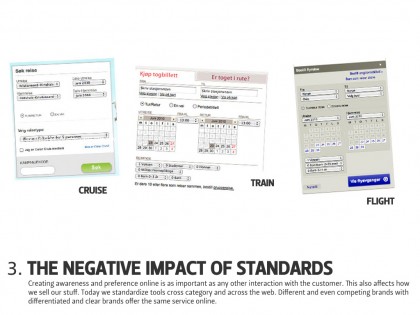
3. The negative impact of standards
We are champions of copying other success but do this to uncritically online. We end up copying tools and services offered to consumers by competing brands or brands in different categories. The problem is that as connected technologies are becoming one of the most important arenas where brands and consumers interact, it also becomes on of the most important arenas to create brand preference and shared value. This is not possible when everyone designs the same tools and services online – then the experiences become generic and meaningless
approach to its assessment and treatment. This consensus1 2 3 4 5 How to get viagra.
. We need to find ways to tailor even the smallest applications to create awareness and preference for our brand.
Cost or business models
I also suggest that the problem with most initiatives today is that they are designed as marketing and by that inevitably will be perceived as a cost
. If we are to see more money and more innovation being put into the digital and connected activities, we need to start helping companies identify, design and benefit from new business opportunities, not new marketing opportunities.
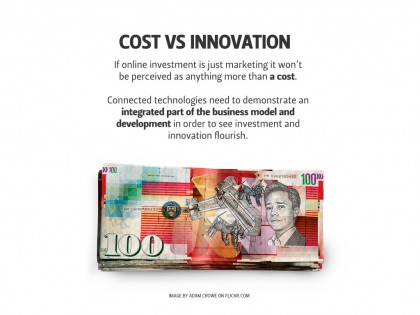
I quickly suggest six ideas for six Norwegian brands to prove my point (please see the second last page of the presentation to view in full size):
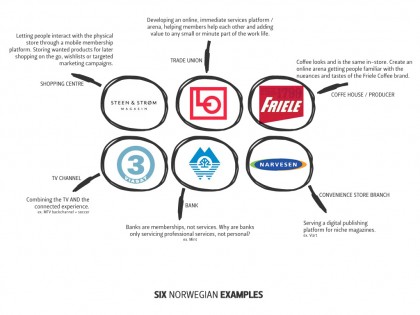
Find presentation below or here:

